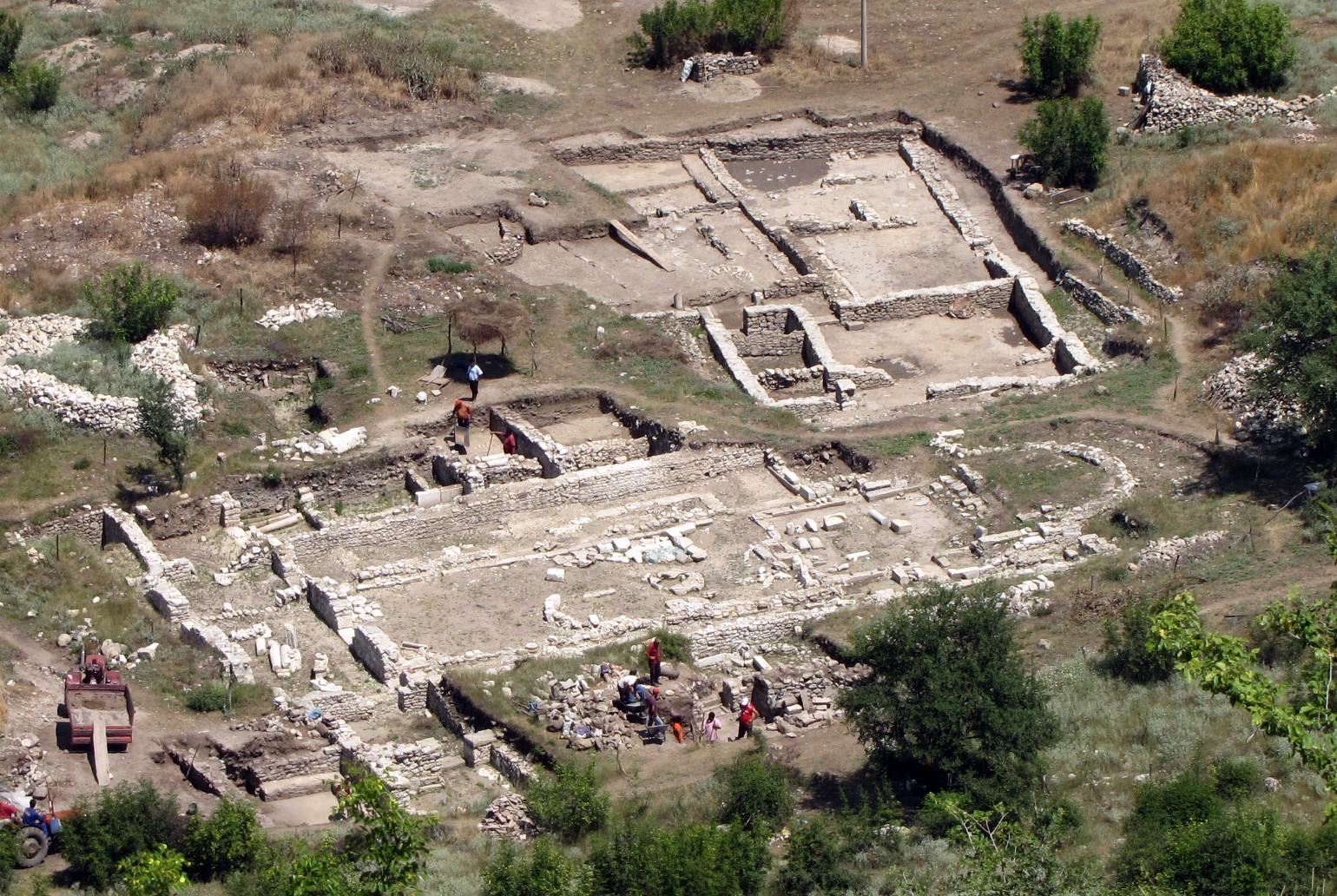A fortified late antique city in Kratovo region. "Golemo Gradište" is the name of a high elongated hill along the southern bank of the Kriva River, in the area of the Kratovo village of Konjuh. On the flattened plateau at the top of the hill and at its foot are the remains of a large fortified town dating to Late Antiquity (5th-7th century).
The first knowledge of the existence of this site was obtained in the first half of the 20th century, after the accidental discovery of the church "Rotunda", by the inhabitants of the village of Konjuh, in 1919, as well as from the numerous columns and worked stones, excavated from the site and built into some of the houses of the locals that can still be seen today.
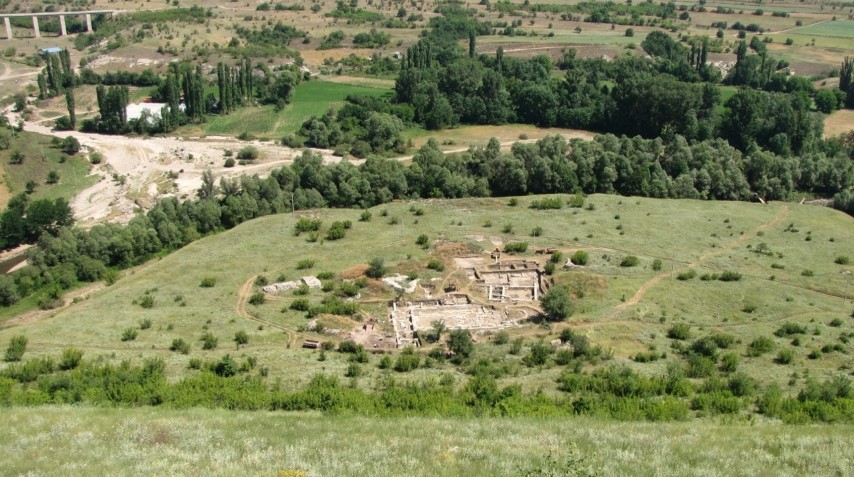
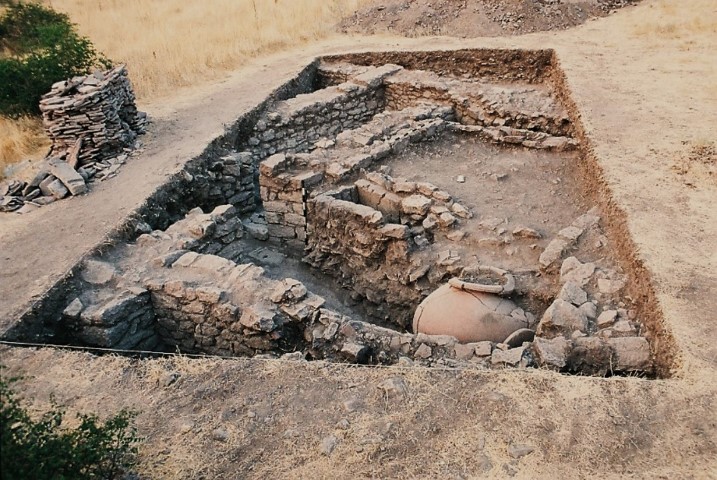
Archaeological studies and surveys carried out in the middle and second half of the 20th century reveal that this city covered an area of about 17 hectares, had an acropolis and two residential terraces on the northern and southern slopes of the hill, which were protected by strong defensive ramparts.
According to historical and archaeological records, the fortification was erected/strengthened during the reign of Emperor Justinian, in the middle of the 6th century; the city was a wealthy economic, administrative and religious center in this part of the Balkans and the Roman province of Dardania, the second largest city after Scupi (Skopje). The monumental church complex discovered on the north terrace, and the residence in its immediate vicinity testify to the economic power of the city in the mid-6th century.
This prosperity was due to its strategic geographical location, on the very tripoint of the provinces of Dardania, Macedonia Secunda and Dacia Mediterranea, along a main trade route leading from Scupi to Pautalia (Kyustendil) and Serdica (Sofia), as well as to the proximity of the ore deposits of Kratovo, rich in gold, silver, copper, and iron ores that were extensively exploited during the Roman period. As for the identity of this city, there are two theories that identify it as Tranupara or Zapara.
The site and its surroundings were inhabited from prehistoric times to the Middle Ages. On the northern residential terrace, under the remains of late Roman buildings, artifacts from the Neolithic, Iron Age and Classical periods have been discovered.
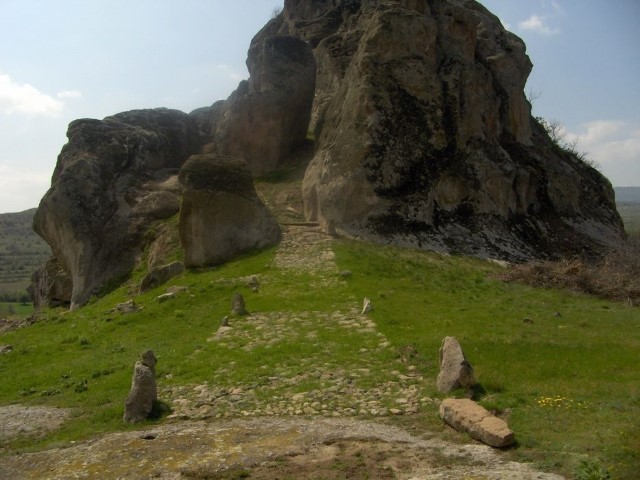
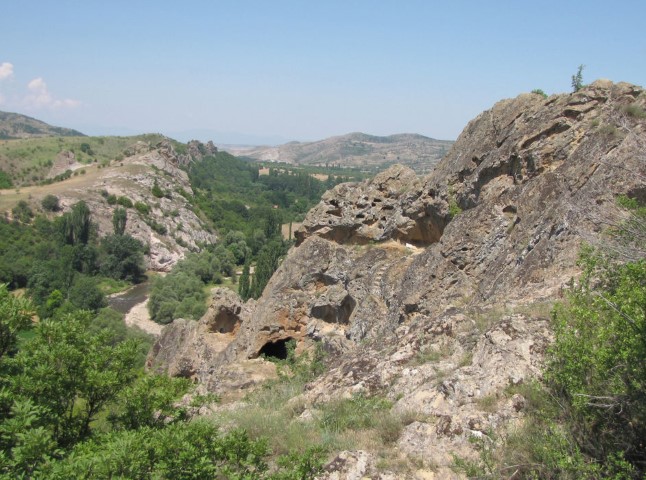
There is not enough data for an early Roman phase of settlement on the northern terrace, which is why it is believed that the city was built in the late 5th or early 6th century. After years of prosperity the city suffered in military sieges by the Slavs, and by the beginning of the 7th century, the inhabitants had left this area, moving to the safety of the acropolis.
We do not know about the continuity of urban life in Golemo Gradište in the early Middle Ages, until the 14th century; that period is evidenced by coin finds and historical data about the town of Konjuh, where traders stopped with their caravans. This caravan route, probably not at all or very slightly modified, was in use until the 19th century, but the determination of its location, as well as the location of the medieval town of Konjuh, represent a new stage in the systematic research of the site of Golemo Gradište. For more info: https://www.konjuh.mk/

